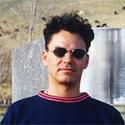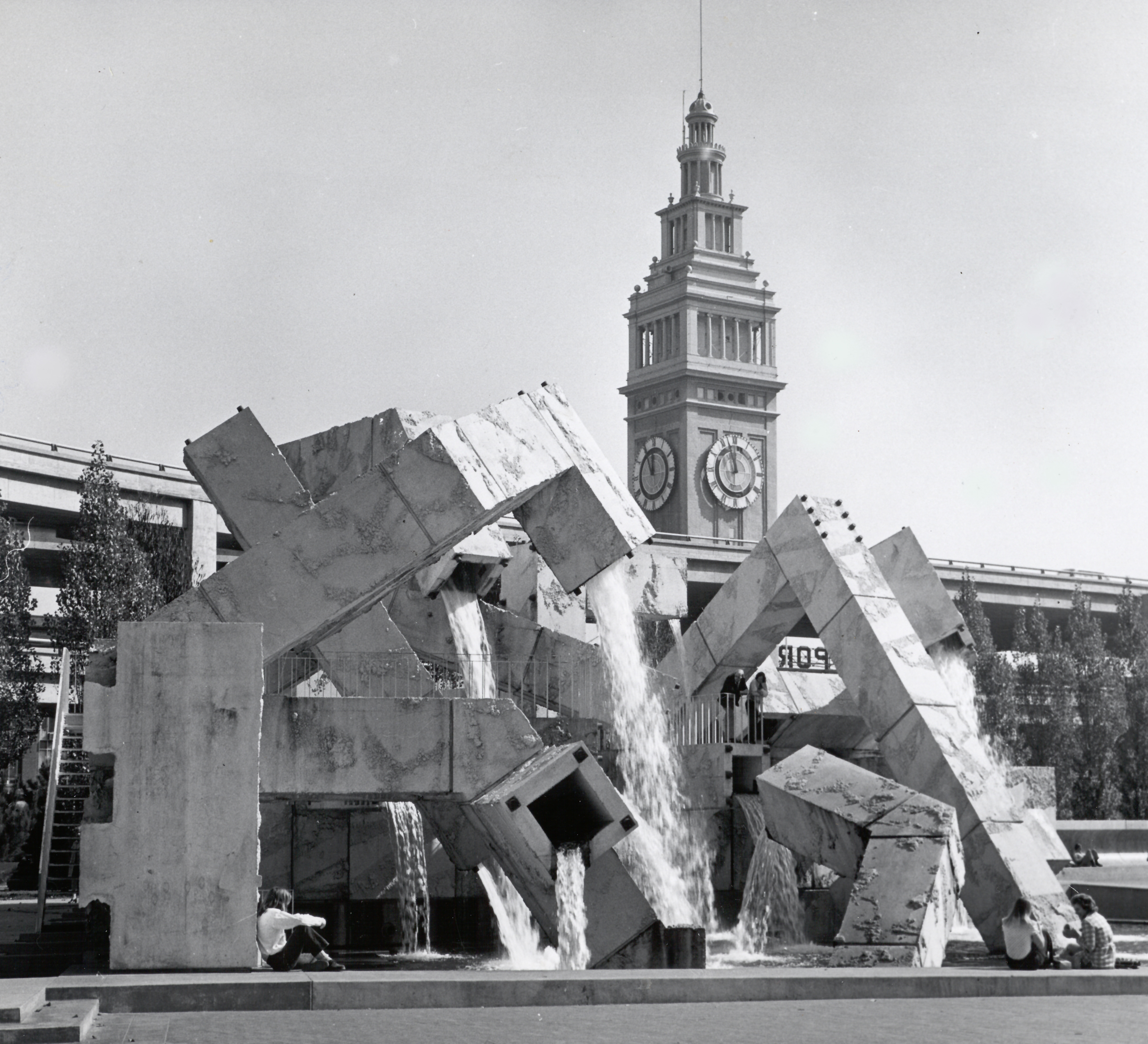
Daytripping to Donum
By Mark Taylor
As well as being a leader in sustainable single-vineyard, single-appellation Pinot Noir and Chardonnay, Donum's nearly 60 monumental works include open-air sculptures representing a global community of artists, including works from leading practitioners from 18 nations, across six continents.
Passing through the thick drape of summer fog that hangs over the Golden Gate feels like trading one reality for another. Just beyond, the Rainbow (Robin Williams) Tunnel provides a similar sensation — acting as a portal from San Francisco's Oz-like skyline to the rolling hills of California's north coast.
It's a fitting start for a trip to The Donum Collection in Sonoma county's Carneros region, which is reinforced upon arrival. Greeted by Barcelona artist Jaume Plensa's "Sanna," the roughly 20-foot alabaster head of a young girl, eyes meditatively closed, my companion and I share the sentiment that space has just warped. We are crossing into another world populated with the unexpected. (One of Plensa's monumental sculptures played a pivotal role in a recent TV thriller, so it's no wonder we sense a glitch in the matrix.)
Pulling into the parking spot, it looked like Donum must have had a recent fire. One of the palm trees lining the lot is ragged and blackened, inducing that primal sadness one experiences in a freshly burned out landscape, all life scorched — a visit to the moon. But no, the tree by U.K. artist Douglas White, is a palm made of blown-out truck tires. Conceived while on a residency in Belize, the artist synthesized the prevalence of discarded rubber on the country's roads with the practice of burning diseased trees in the forest to express the rot at the root of colonialism. The sculpture's placement among healthy live palms (along with the region's traumatic recent history of fire) reinforces the day's uncanny feeling — and we have yet to exit the car.
Passing a giant bronze Yayoi Kusama pumpkin that paradoxically appears to be floating in a pond, we are greeted warmly and handed a cool glass of rosé. We will wait here to join the rest of our group for a personal tour of the winery's art collection. Meanwhile we roam, looking out over acres of lush vineyard spanning the horizon behind "Pink Ladies," a cheerful polyurethane fountain created for the estate by New York artist Lynda Benglis. Water gurgles; the day is unusually mild for the region (low 80s) in mid July. Other people mull about waiting for their tours to begin. Pastel sun dresses and seersucker jackets dot the landscape. The scene, set against blooming flower gardens and rolling hills of gold and green, might not feel as pleasurable in hotter weather, though the estate provides old-fashioned umbrellas to shield guests from the sun (an element that only adds to the blurry Impressionist vibe).

Subodh Gupta, "People-Tree." Main image: Jaume Plensa "Sanna," 2015. Images courtesy The Donum Estate©
"Rehearsal," a glittering, red and gold, floor-to-ceiling tapestry dominates the central pavilion. Ghanian sculptor El Anatsui uses copper wire to weave brightly colored discarded materials (bottle caps, aluminum packaging) into gorgeous, large-scale compositions, spinning beauty out of waste and consumption. The piece continues the recycling theme begun earlier by Douglas White, which will be picked up later in Subodh Gupta's "People Tree," a giant banyan constructed entirely of stainless steel pots and pans.
My friend and I are soon joined by three Millennial women who met while working at Pinterest. One is a member of Donum's wine club and has treated her former colleagues (visiting from out of town) to today's tour and tasting. Our guide, a Sonoma native, leads us through the park.
Located on a former dairy farm, Donum was already famous for its Pinot Noir when Danish businessman Allan Warburg learned the property was for sale in 2010. Within a year, he and his wife Mei were majority owners. As surrounding parcels became available, the two expanded the estate.
Though they didn't initially set out to create a sculpture park, the couple was interested in joining the provocation of contemporary art with the beauty of the natural landscape within a working vineyard. The idea was to inspire contemplation, to provide refuge from the fast pace of digital life, encouraging visitors to slow down. Following their natural interests, the Warburgs started collecting large-scale pieces for Donum shortly after acquiring the vineyard and began commissioning site-specific works in 2019. Today, the estate is home to 60 pieces by some of the international art world's biggest stars.
“I wish I could say I had a grand strategy for the sculpture park, but I really didn’t," Allan admits. The collection developed as a personal expression of his and Mei's long-held passion for art, though they hope it will play a greater role in the West Coast's art buzz. In an interview with Billionaire magazine, Warburg joked about the financials, "You've heard the saying, the only way to make a small fortune in the wine business is to start with a big one. What we are creating at Donum gives us great joy. It is an investment for our pleasure, and for those who visit."
One of our fellow travelers remarked on this pleasure, sharing her appreciation for the international feel of the place. The fact that so many large-scale works had been discovered all over the world (from 18 nations across six continents) and relocated to this idyllic landscape felt intimate to her, as though these colossal structures had been assembled on a 340-acre mood board for her personal enjoyment.
I experienced a similarly "digital" sensation a couple of times on the path, as though I was in a computer simulation — strange objects on the horizon appearing like Google Earth pins or spinning avatars in an online landscape (think Second Life). The odd juxtapositions of local and international, far and near, large and intimate amplified the collection's otherworldliness.

Ghada Amer, "The Words I Love the Most," 2012; Photo by Robert Berg; images courtesy The Donum Estate©
It was a clear day, so we could see San Francisco in the far distance. We passed "The Words I Love the Most," a bronze globe of Egyptian sculptor Ghada Amer's favorite Arabic words, and were standing on the edge of a circle commanded by an Ai Weiwei installation of 12 bronze heads, one for each character in the Chinese zodiac. (A unique series of "Circle of Animals" wine labels was created by Ai Wei Wei for Donum.) Our guide is a horse, there are a couple of monkeys. All eyes turn to us, the two Gen-Xers in the group, who reply in unison: dragon. Did the others just stand up a little straighter? Or is that what a dragon would think?
Music drifts over from "HYPERSPACE," a site-specific composition housed inside "a futuristic space organ" made of large stainless steel shafts, infusing the landscape with an otherworldly soundtrack. Again the online world intrudes, TikToks of wild animals soothed by gentle music inspire a vision of "HYPERSPACE" surrounded at night by coyotes, who modulate their howls to harmonize with its unending music.
Other wonders lurk in the landscape, an Anselm Kiefer airplane; Keith Haring's 1987 rust-colored "King and Queen," well worth climbing the hill to be dwarfed beside; Olafur Eliasson's kaleidoscopic "Vertical Panorama Pavilion," which hovers like a flying saucer on the hillside; and the not-to-be-missed "Crouching Spider," the first of Louise Bourgeois' now iconic metal sculptures.
Once the tour has ended, our guide leads us into a private room dominated by picture windows. Places have been set for our group and we are treated to a tasting menu, pairing amuse-bouches with Donum's chardonnay and a selection of its pinots. Yum.
Though the experience lasted a couple of hours, it was all too brief; we didn't have time to see the full collection. The afternoon's spell is dissipating and we must be on our way.
Donum utilizes art to transport, opening portals between perspectives. The sculpture park acts as a hub for thinking about different cultures, offering a vision of a more unified world. If you are fortunate enough to gain access, Donum generates an intriguingly alternate reality.
→ For more information, visit thedonumestate.com



